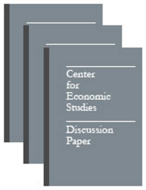
An official website of the United States government
Here’s how you know
Official websites use .gov
A .gov website belongs to an official government organization in the United States.
Secure .gov websites use HTTPS
A lock (
) or https:// means you’ve safely connected to the .gov website. Share sensitive information only on official, secure websites.
-
//
- Census.gov /
- Library /
- Census Working Papers /
- Measuring Plant Level Energy Efficiency and Technical Change in the U.S. Metal-Based Durable Manufacturing Sector Using Stochastic Frontier Analysis
Measuring Plant Level Energy Efficiency and Technical Change in the U.S. Metal-Based Durable Manufacturing Sector Using Stochastic Frontier Analysis
Measuring Plant Level Energy Efficiency and Technical Change in the U.S. Metal-Based Durable Manufacturing Sector Using Stochastic Frontier Analysis
Abstract
This study analyzes the electric and thermal energy efficiency for five different metal-based durable manufacturing industries in the United States from 1987-2012 at the 3 digit North American Industry Classification System (NAICS) level. Using confidential plant-level data on energy use and production from the quinquennial U.S. Economic Census, a stochastic frontier regression analysis (SFA) is applied in six repeated cross sections for each five year census. The SFA controls for energy prices and climate-driven energy demand (heating degree days - HDD - and cooling degree days - CDD) due to differences in plant level locations, as well as 6-digit NAICS industry effects. A Malmquist index is used to decompose aggregate plant technical change in energy use into indices of efficiency and frontier (best practice) change. Own energy price elasticities range from -.7 to -1.0, with electricity tending to have slightly higher elasticity than fuel. Mean efficiency estimates (100 percent equals best practice level) range from a low of 32 percent (thermal 334 - Computer and Electronic Products) to a high of 86 percent (electricity 332 - Fabricated Metal Products). Electric efficiency is consistently better than thermal efficiency for all NAICS. There is no clear pattern to the decomposition of aggregate technical Thermal change. In some years efficiency improvement dominates; in other years aggregate technical change is driven by improvement in best practice.
Others in Series
Working Paper
Working Paper
Working Paper
Share
Related Information
Some content on this site is available in several different electronic formats. Some of the files may require a plug-in or additional software to view.
 Yes
Yes
 No
NoComments or suggestions?


Top

